The two first World Champions in Knock Out Sprint are the two biggest favourites ahead of the race – Tove Alexandersson (Sweden) and Matthias Kyburz (Switzerland). While Alexandersson took a very clear victory, running alone more than half of the race, Kyburz had to fight for his gold medal all the way to the finish.
Silver medals went to Megan Carter Davies (Great Britain) and August Mollen (Sweden), while Eef van Dongen (Netherlands) and Jonatan Gustafsson (Sweden) took the bronze medals. The biggest surprise of the day was clearly van Dongen’s bronze medal.
Split time analysis
Below graphical split time analysis of the finals and the semi-finals are shown along with comments on the race development.
Edit: Based on Pee’s comment below, it seems like the official split times are off with a few seconds, randomly distributed between different runners. This means that the split time analysis below does not show who is first on a control, but shows when a runner loses significant time. Sorry about that, but as GPS-accuracy is even worse, this is still the best we have except watching the broadcast in detail.
Men’s final
In the men’s final most of the field ran together in one big pack from the start, but notably Tim Robertson tried to take his own routechoices, without giving a big advantage. One of the big pre-race favourites Kris Jones lost 8 seconds on the routecehoice on the leg to the 3rd control, and never got into the lead again after this mistake. The decisive leg for the victory was the long leg to control 10 where the pack split up – Matthias Kyburz running the fastest routechoice to the left and deciding the race for himself here.
Women’s final
As we have seen many times before, Tove Alexandersson simply had higher speed than all here competitors and started getting a gap already to the second control – a gap which increased from control to control. Behind Megan Carter Davies run an impressive race, leading the rest of the field all the way to the finish. Eef van Dongen was right behind Carter Davies from the 4th control to the finish – with Simona Aebersold not far behind, but never managing to get all the way up close to van Dongen.
Men’s semi-finals
Kris Jones ran an excellent semi-final in the first semi-final heat, running offensively in the lead all the way. Matthias Kyburz was not as happy with his semi-final as with his final, not managing to get control of his race – but it was still enough to finish second. Adrien Delenne was not far off, but Kyburz took the second place which secured him the final due to his routine and fast finish.
In the second semi-final Vojtech Kral was in the lead most of the time, but lost time towards the end. Håvard Sandstad Eidsmo did what looked like a winning move with a speed surge to the third last control, but lost some time at the very end and had to let both Jonatan Gustafsson and Loic Capbern pass him.
The third semi-final was very tight, but all runners being within 4 seond all the way to the last control – and notably August Mollen falling and losing 4 seconds out fom the start. Tim Robertson had the lead all the way until the second last control, with Riccardo Scalet in second for most of the race. Robertson managed to stay in the Top-2 going to the final all the way to the finish, while Scalet lost a lot of time towards the end, with August Mollen accelerating and taking the victory.
Women’s semi-finals
In the first semi-final Tove Alexandersson set high speed from the start, and only Simona Aebersold could follow here all the way. Victoria Haestad Bjornstad navigated to the wrong control to the 6th control and lost a lot of time and the chance to fight for the Top-2.
In the second semi-final Megan Carter Davies run a very impressive race, keeping in the lead all the way from start to finish. Andrine Benjaminsen looked like she was in control for the final, being right behind or in shared lead with Megan Carter Davies until she took a wrong routechoice to the third last control and lost too much time to battle for a place in the final. Instaed Eef von Dongen sprinted to the final.
In the last semi-final the runners did many mistakes, and the lead changed several times. In the end Sarah Hagström took the victory ahead of Aleksandra Hornik (who was disqualified) and with Lina Strand in third (who then took a place in the final).
Maps and GPS-tracking
See maps from the finals and semi-finals below. GPS-tracking and maps from all races are available through the GPS-provider TracTrac. The courses had no forking or “runners choice”, but instead tried to use long legs with several routechoices to split up the runners. This worked well in some heats, especially in the finals quarterfinal, but in many heats the runners just followed each other.
Results
Men – overall
| 1 | Matthias Kyburz | 7:19 | 3:45 | |||
| 2 | August Mollen | 7:20 | 3:45 | |||
| 3 | Jonatan Gustafsson | 7:24 | 3:47 | |||
| 4 | Tim Robertson | 7:28 | 3:49 | |||
| 5 | Loic Capbern | 7:30 | 3:50 | |||
| 6 | Kristian Jones | 7:31 | 3:51 | |||
| 7 | Ralph Street | 6:52 | 3:31 | |||
| 8 | Adrien Delenne | 6:43 | 3:26 | |||
| 9 | Havard Sandstad Eidsmo | 7:08 | 3:39 | |||
| 10 | Jonathan Crickmore | 6:48 | 3:29 | |||
| 11 | Miika Kirmula | 7:10 | 3:40 | |||
| 11 | Eirik Langedal Breivik | 6:55 | 3:32 | |||
| 13 | Tomas Krivda | 7:02 | 3:36 | |||
| 13 | Vojtech Kral | 7:12 | 3:41 | |||
| 13 | Riccardo Scalet | 6:56 | 3:33 | |||
| 16 | Martin Hubmann | 7:30 | 3:50 | |||
| 16 | Aston Key | 7:01 | 3:35 | |||
| 18 | Aron Bako | 7:10 | 3:40 | |||
| 19 | Algirdas Bartkevicius | 6:18 | 3:13 | |||
| 19 | Robert Merl | 6:49 | 3:29 | |||
| 19 | Riccardo Rancan | 6:30 | 3:20 | |||
| 19 | Jannis Bonek | 6:30 | 3:20 | |||
| 19 | Martin Regborn | 6:14 | 3:11 | |||
| 19 | Alvaro Casado | 6:31 | 3:20 |
Women – overall
| 1 | Tove Alexandersson | 8:09 | 4:10 | |||
| 2 | Megan Carter Davies | 8:24 | 4:18 | |||
| 3 | Eef van Dongen | 8:25 | 4:18 | |||
| 4 | Sara Hagstrom | 8:29 | 4:21 | |||
| 5 | Simona Aebersold | 8:30 | 4:21 | |||
| 6 | Lina Strand | 8:44 | 4:28 | |||
| 7 | Elena Roos | 7:05 | 3:37 | |||
| 8 | Ursula Fesselhofer | 6:45 | 3:27 | |||
| 9 | Ana Isabel Toledo Navarro | 7:32 | 3:51 | |||
| 10 | Tereza Janosikova | 7:42 | 3:56 | |||
| 10 | Andrine Benjaminsen | 6:50 | 3:30 | |||
| 12 | Charlotte Ward | 7:08 | 3:39 | |||
| 13 | Victoria Haestad Bjornstad | 10:09 | 5:12 | |||
| 13 | Malin Agervig Kristiansson | 6:51 | 3:30 | |||
| 13 | Kateryna Dzema | 7:35 | 3:53 | |||
| 16 | Zuzana Kovacova | 7:58 | 4:05 | |||
| 16 | Venla Harju | 6:56 | 3:33 | |||
| 18 | Aleksandra Hornik | 7:02 | 3:36 | |||
| 19 | Marie Olaussen | 7:37 | 3:54 | |||
| 19 | Miri Thrane Oedum | 7:26 | 3:48 | |||
| 19 | Sabine Hauswirth | 7:11 | 3:41 | |||
| 19 | Grace Molloy | 7:42 | 3:56 | |||
| 19 | Cecile Calandry | 7:24 | 3:47 | |||
| 19 | Nicoline Friberg Klysner | 7:14 | 3:42 |
Full results – including results for each heat and qualification
 World of O News
World of O News
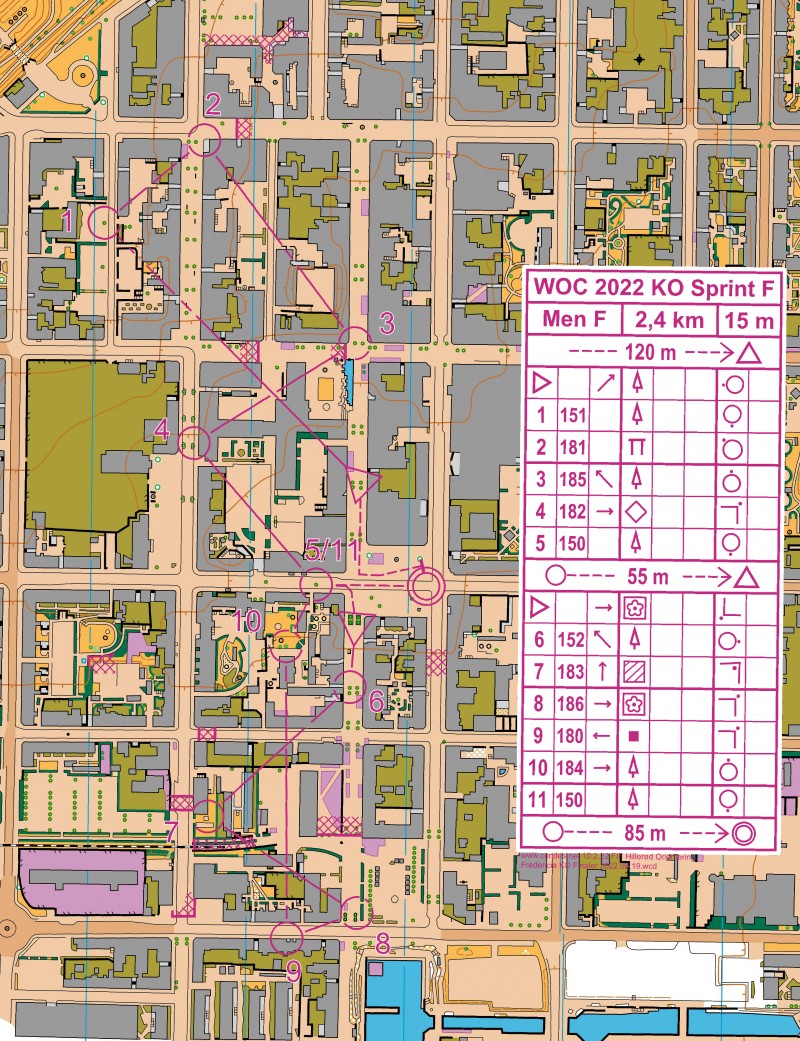


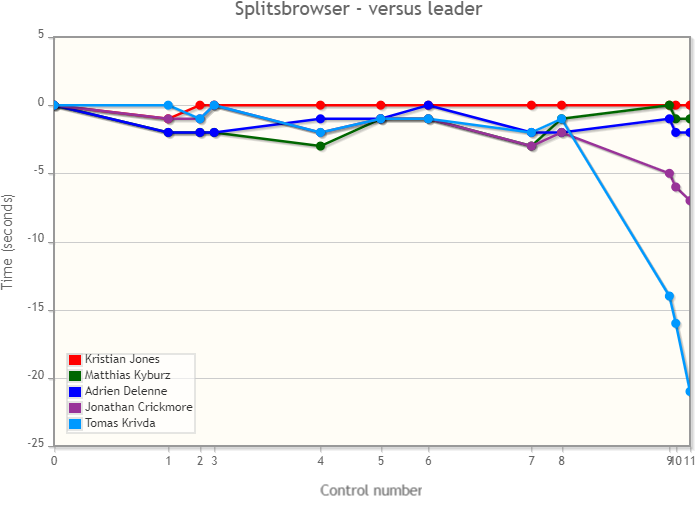
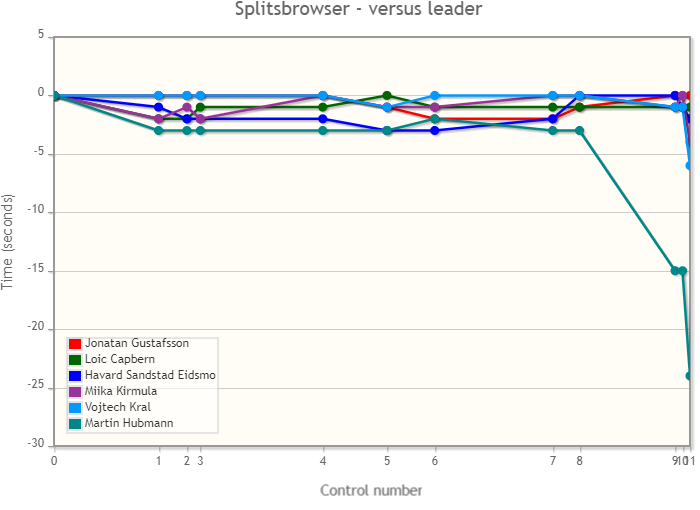
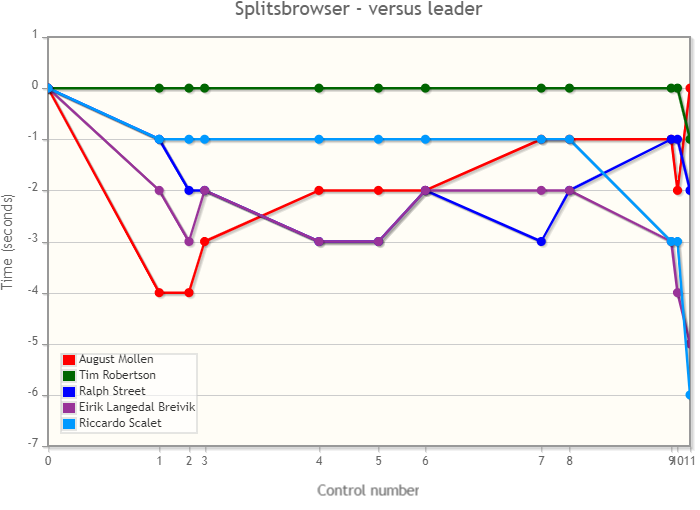
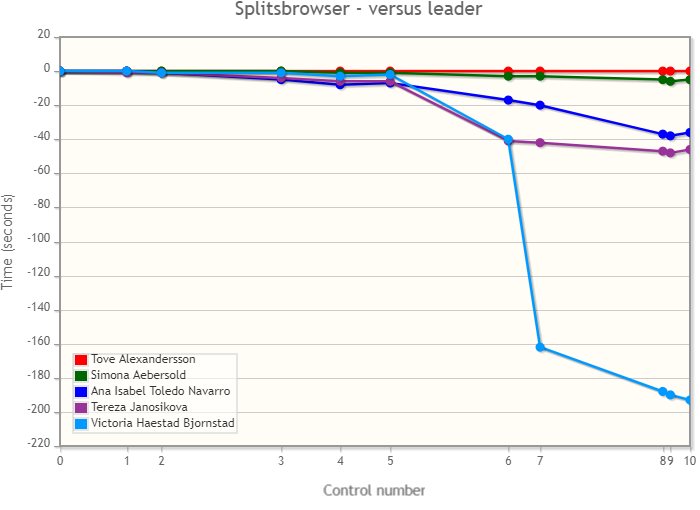



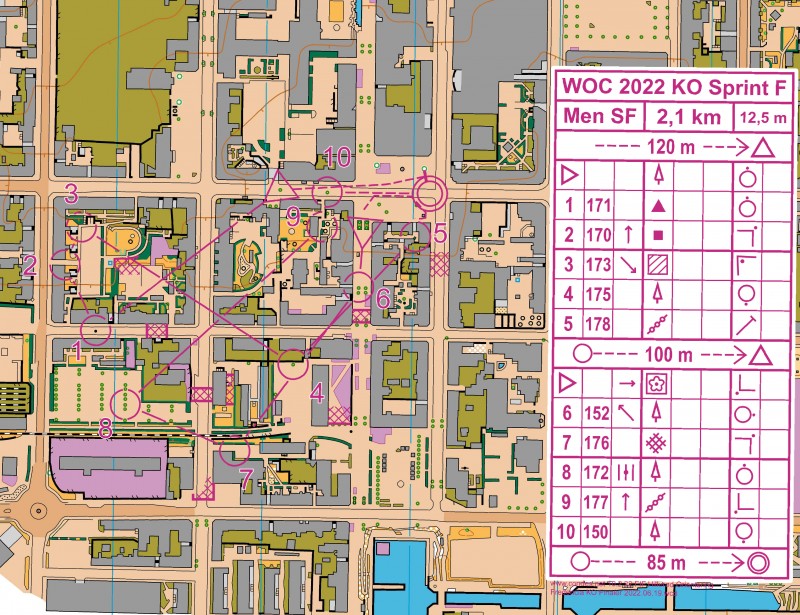
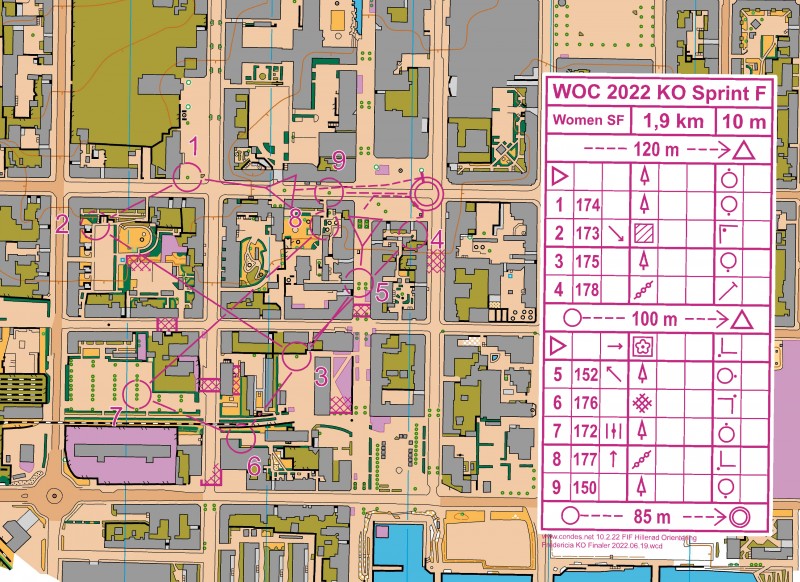
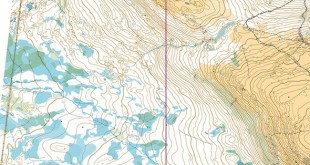
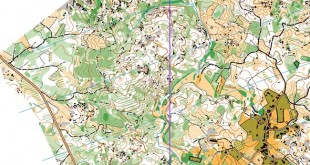

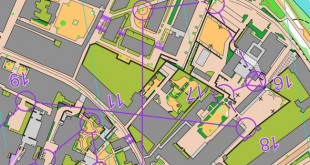
Is it really orienteering? I watched it on TV and I’m not convinced. In many heats, they just stayed together, I guess some of them don’t even look at the map.
For me the lack of any splitting method/forking was the biggest issue. That created the massive gaggles of runners. Had they used some I think it would’ve been at least considered as ‘orienteering’.
But the format has got a potential in my opinion. Just need to improve/adjust some things.
Fully agreed, some runners were just following the lead waiting for the last effort. The lack of butterflies/diamonds/variations is a very clear problem: we orienteers, we don’t just run.
The format is great, fun and intense. It fits so well with TV broadcasting.
I hope it will improve with more experiences and events.
IMO, the organizers really tried their best, good courses, presumably good maps, a smart decision deciding the men’s race, but the best sprint orienteer just outside the medal positions and a very physical women’s race.
And why Denmark? With Copenhagen in the East, Legoland in the West, and some less-than-spectacular urban and agricultural areas in between? Wasn’t the idea behind splitting the WOC that less experienced, exotic countries would be able to host a Sprint WOC?
Yes, some of the heats were a bit boring without the runners splitting up much… But some were also very exciting.
My theory is:
1. When then all stay together they run at low speed, which makes for easier map reading and better rout choises and therefore less opportunites for better alternative routes and less mistakes. — The pack still keeps staying together.
2. On the other hand, in the few heats where different options were choosen from the start, it lead to many more different routechoises taken later on. Probably because the speed was high, giving less opportunity to read the map ahead for the best choises and enabling more chances for different routes.
3. Even just simple forking in the early part of the reace would reduce the boring pack running later on, even if the forking itself is not very decisive.
In order to motivate runners to run faster, one should do like in cross-country skiing sprints, and let some runners qualify on time (“lucky loosers”). For example, one could have two semifinals where the two best runners plus the two best times qualified for the final.
Having only two semifinals would also make the competition more fair. This time, the women from the first semifinal got almost twice as much time to rest compared to those who qualified from the third final.
Totally agree on that. Don’t understand why they have left out the lucky loser bit now that everything else is modelled after the sprint skiing competitions…
Split times in WinSplits Online (and therefore in analysis) are not accurate.
For example in ctrl 9 they punch (TV footage) in queue order Robertson, Mollen, Kyburz, Gustafsson (1-2 m apart each other).
WinSplits Online says:
1. Kyburz 6:05
2. Mollen & Robertson 6:06
4. Gustafsson 6:06
Live results (as well as TV graphics) show
1. Mollen & Robertson 6:03
3. Kyburz & Gustafsson 6:04
which is correct based on observed order also
Ctrl 3 Kyburz has same time as Robertson but in pictures he is about two seconds behind etc.
Errors seems to be quite systematic, here diifferences between live results and winsplits online:
ctrl 2 4 5 9 10
KYB 0 1 -1 0 0
MOL 0 1 0 2 1
GUS 1 2 1 2 2
ROB 2 3 2 2 2
CAP 0 1 0 1 1
JON 0 1 0 0 1
Thanks, Pee, looks like we have to treat the official split times with an uncertainty of a few seconds, so just as the GPS they can’t be used for any real analysis. A pity.
This is a consequence of IOF only allowing timing in whole seconds which mean that when we need to split runners due to finish-photo we have to move the whole seconds (in some heats 3 seconds!).
Since timing and punching systems are separate, we need to calculate the splits during the course backwards from the finish-time of the timing system to get correct total times..
If IOF would have allowed timing in 1/10 seconds things would look much more better (with electronic gun-start and photo-finish camera as we had on the knockout we have an accuracy of 1/1000s in timing but are only allowed to publish results as whole seconds)…..
I do not follow the logic in “we need to calculate the splits during the course backwards from the finish-time”. Could not the adjustment to finish-photo be applied just to the split time for the last leg?
They should use actual finish time instead of “adjusted finish time” for calculation of split times.
That results diffrent finish times in split times vs. officila results but IMO that is less worse than now when split times gives wrong order of runners in controls.
Even better would be that also official results would allow runners have same time but different placing (so no need for adjustement)… unfortunately systems doesn’t seem to support that.
Even better: IOF should allow usage oif 1/10 seconds in knock-out heats.